IAnD Exclusive
By Rutvi Ashar
Photography: Courtesy Reverse Thought Creative Studio Pvt. Ltd.
Read Time: 3 mins
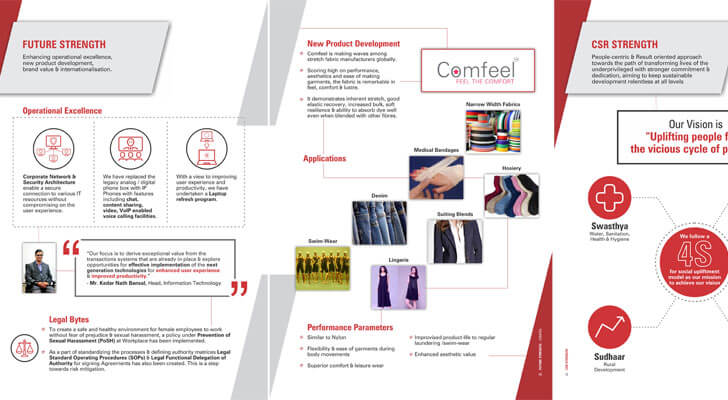 |
| AYM Newsletter |
Reverse Thought Creative Studio Pvt. Ltd., Mumbai attributes client-satisfaction and an intimate connectedness in the business of graphic design, to the art of storytelling….
Over the last decade, creative start-up, Reverse Thought has worked on diverse projects for corporates, jewellers, real estate companies, non-government organizations, architects, photographers and lifestyle stores. Passionate about combining strategy with art, the team offers creative solutions to business challenges following a process that is exciting and exhilarating, as much as it is enlightening. Their single, guiding principle is deconstruction and conscientious re-runs to the drawing board with a thorough understanding of the client’s business and communication objectives.
In conversation with IAnD, demystifying a case study: AYM Syntex:
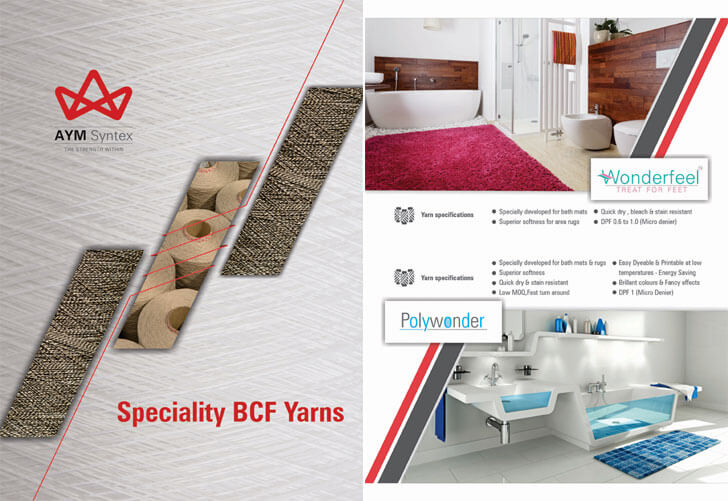 |
| Brochure |
IAnD: About the project: colours, materials, scale, process and execution, design concept.
Reverse Thought: The client, AYM Syntex has been revolutionary in the field of Synthetic yarn manufacture. In business since 1985, the company has influenced the synthetic yarn manufacturing process throughout. Keeping this in mind, the project designs contained:
1. Rebranding & Packaging
2. Annual report
3. Corporate Brochure & presentation
4. CSR Brochure & print collaterals
5. Other collaterals for exhibitions and display
The colour palette speaks of understated maturity and strength, which forms the foundation of the designs. Major colours are bright red, black and slate grey.
IAnD: What inspired you to execute this project? And how do you narrow down to the one core thought?
RT: AYM Syntex approached us with the intention of narrating the AYM brand story to its customers in a unique way. We realized after the briefing that the company believes in the concept of ‘the strength within” at every point, from manufacturing the product to the way they interact with customers. This became our core thought for the design concept, our plotline of the story.
IAnD: What was different about the client and his product? How did the particular design get finalized?
RT: A revolutionary in the field of synthetic yarns, AYM Syntex had a plethora of products which spoke of strength and efficiency. We wanted to help them reach larger audiences with a story that spoke of this strength. We made sure our designs reflected this thought throughout.
 |
| Diary |
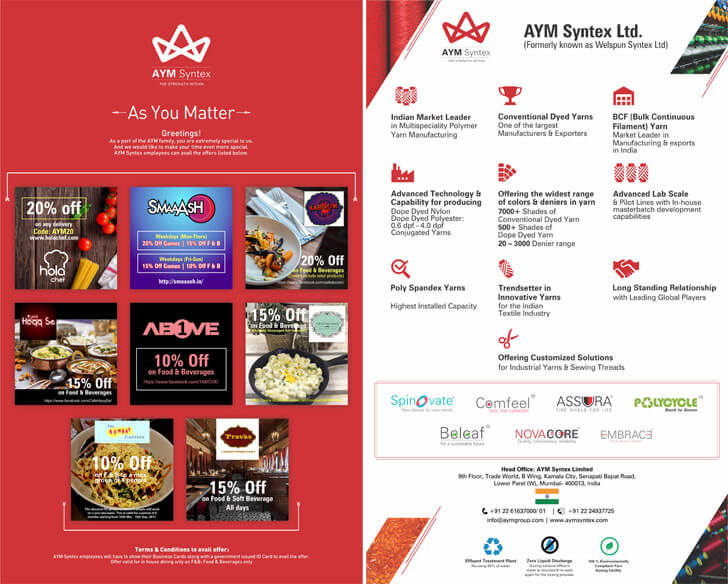 |
| E-mailer |
IAnD: What determines the direction of the look and feel of the branding and how do you ensure it in the result?
RT: Building a clear concept and proper management of the planned visual helps determine the right direction for the project. The only way to ensure this is to thoroughly understand the given brief and to chalk out a plan, which runs on the lines of the same.
IAnD: Does the choice of typography and colours influence the impact of the brand? How do you steer clear of commonly made errors of mismatch?
RT: Colours and typography are an integral part of the design. A clean, effective colour palette accompanied by simple, crisp typography can make a design hit the target perfectly. Over the years, we have learnt that we unintentionally make mistakes. The good part is that they taught us quite a lot. Our graph has inclined immensely over the years; with each project, we progress.
 |
| Brochure - inside page |
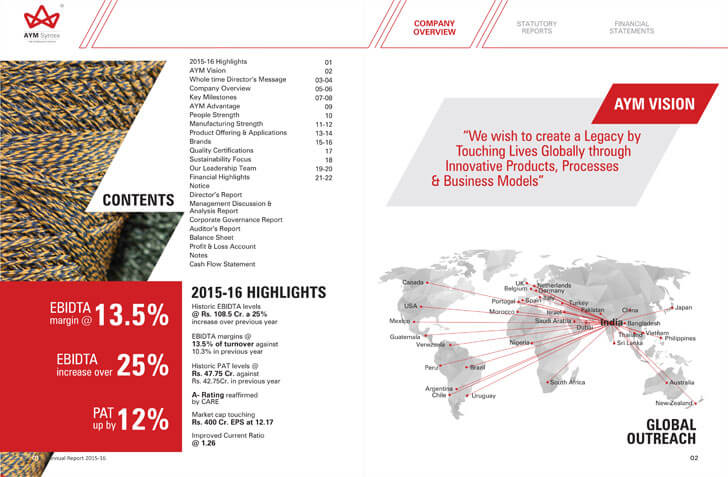 |
| Annual Report |
IAnD: How do current and ongoing changes in creative trends affect your work? Do these trends shape your work or do you follow your own set of rules?
RT: Whilst we keep ourselves abreast with current trends, we don’t really follow things blindly. Yes, every new idea inspires us. We do have our own set of principles, but upgrading them constantly as per the changing times is what shapes our work.
IAnD: Do you consider technology a big part of art today and its impact on constantly changing trends? How does that affect your design sensibility and keep you on your toes?
RT: Technology is an indispensable part of our lives today. Every field has been impacted by it; in fact technology has made things a hundred times better. We constantly remind ourselves to be adaptable and that helps us in the long run.
IAnD: Express the term “radical” in your words.
RT: Being revolutionary is good, but being cognizant about current events and updating one’s knowledge base every now and then, is what it means to be radical.
IAnD: The one quality that has been your USP to success? Why?
RT: Understanding the brand story to implement the same in a clean, crisp concept that conveys the story across all groups is what we stand for.

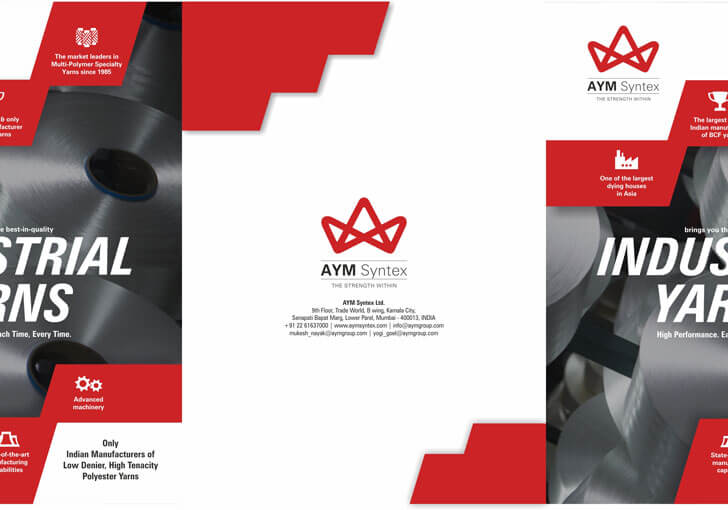
When looking for the best graphic design, do not hesitate to take advice from others. Designers can be very passionate about their work. They will give their all to give you the best results. They will have their own opinions on what could be best for your business. If you want, you can always go for a second opinion. It will help you see things differently and you might be able to come up with a better idea with your designer ... in response to IAnD's discussion on Quora regarding " Besides the academic rules of thumb, is there a set philosophy that governs graphic design?"
ReplyDeleteGraphic designing is all about your audience.
ReplyDeleteLike European audice will like minimalist design but in India people want design with more vibrant colors (This data is douced from a research by some great Institution).
So, basically there are few points you should consider before starting a new .psd or .cdr
Where the artwork is being fixed.
How you audience are going to visualise it (especially the position).
If it is being hold with hands then you should design considering how it will look when you hold it.
If it is being hanged at some wall then…. You should think like wise design from the perspective of the audience.
You should use some set of universal colors if there is no limitations to selection of the colors.
Look accordingly how the artwork is being used.
And lastly COMMON SENSE is a key factor ... in response to IAnD's discussion on Quora regarding " Besides the academic rules of thumb, is there a set philosophy that governs graphic design?"
While there is no set philosophy per se, there are several schools of thought, or notions of aesthetics that govern graphic design. De Stijl, Bauhaus etc had their own sets of philosophies, working with primary colours and geometric shapes. Modernism spoke about functionality in design following a World War; postmodernism shattered all rules and went berserk in an era of mass production.
ReplyDeleteAesthetics of different regions, religions and cultures also contribute to such thought. Indian aesthetics is governed by the Navarasa (literally, nine emotions), which makes Indian art - especially regional ones - so expressive and vibrant. Islamic art incorporates wonderful (and incredibly complex) geometry and tesselations. Wabi Sabi, a traditional Japanese school of thought, accepts imperfection and mortality of beauty and reflects the same in its art and designs.
There are artists and designers who are committed to a particular philosophy. On top of the rules and guidelines, they are governed by such philosophies.
There is no universal philosophy governing graphic design. But there usually are philosophies pertaining to a particular time and place. These philosophies are many in number... in response to IAnD's discussion on Quora regarding " Besides the academic rules of thumb, is there a set philosophy that governs graphic design?"